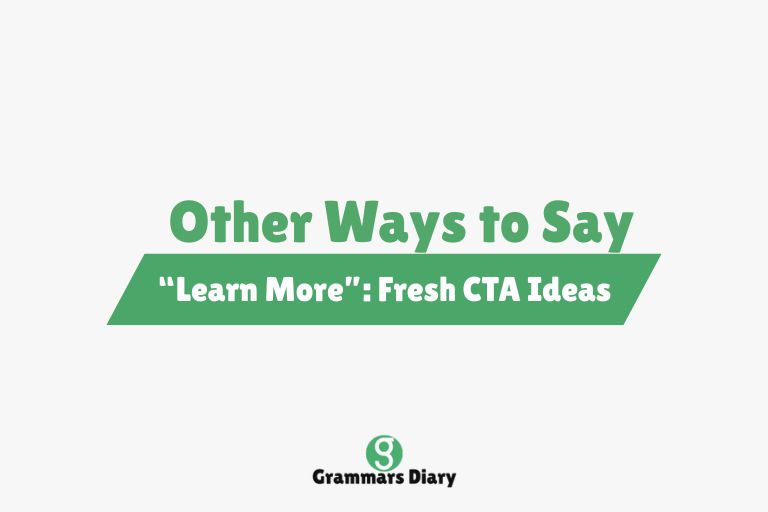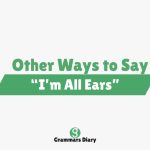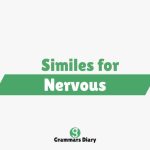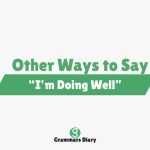“Learn more” is one of the most commonly used call-to-action (CTA) phrases in the digital world—appearing in buttons, banners, email footers, and landing pages everywhere. It’s short, clear, and directs users to additional information. But because it’s used so frequently, it can often blend into the background and lose its persuasive power, especially when you’re trying to stand out or evoke a specific emotion.
If you’re looking to refresh your copy, diversify your CTAs, or tailor your message to a specific audience or platform, switching out “learn more” for a more targeted phrase can make a big difference in engagement and click-through rates. This post explores 20 alternatives to “learn more,” offering context, example sentences, and usage tips for each, so you can be more strategic in your messaging.
Other Ways to Say “Learn More”
1. Discover the Details
Example: “Discover the details behind our newest product line.”
Meaning: This phrase implies that there’s something deeper, perhaps exciting or surprising, waiting to be found.
Usage: Works well in marketing contexts where a sense of intrigue or exclusivity is desired.
2. Get the Full Story
Example: “Click here to get the full story on how we developed this feature.”
Meaning: Suggests that there’s a narrative or background worth exploring, drawing users in like a story.
Usage: Ideal for case studies, origin stories, or behind-the-scenes content.
3. Dive Deeper
Example: “Dive deeper into the science behind our formulation.”
Meaning: Invites the user to explore a subject more thoroughly, implying there’s depth and complexity.
Usage: Suitable for educational content or niche topics that benefit from more explanation.
4. Explore Further
Example: “Explore further to understand our sustainability goals.”
Meaning: Signals that there’s additional terrain or aspects left to uncover.
Usage: Excellent for brands that emphasize transparency, exploration, or open-ended discovery.
5. Uncover More
Example: “Uncover more benefits of switching to our new service plan.”
Meaning: Adds a sense of mystery or hidden value, as if you’re offering a reward for clicking.
Usage: Works well in promotional materials or when highlighting added-value features.
6. Read the Full Guide
Example: “Read the full guide to optimizing your home workspace.”
Meaning: Explicitly tells the user that a comprehensive resource is available.
Usage: Ideal for blog posts, whitepapers, how-tos, or downloadable assets.
7. Find Out How
Example: “Find out how we’ve helped over 1,000 businesses streamline operations.”
Meaning: Invites curiosity with a results-oriented teaser, often with an implied benefit.
Usage: Highly effective in sales and conversion-focused copy.
8. Check It Out
Example: “Check it out and see how we’re different.”
Meaning: Casual and direct, this phrase lowers the barrier to entry and feels less formal.
Usage: Great for younger audiences or social media platforms where tone is more relaxed.
9. Go Behind the Scenes
Example: “Go behind the scenes to see how our shoes are handcrafted.”
Meaning: Creates intimacy by offering exclusive access to something not typically visible.
Usage: Perfect for storytelling and brand-building content.
10. See What’s Inside
Example: “See what’s inside our new membership program.”
Meaning: Encourages curiosity and promises a reveal, especially effective when there’s value or surprise behind the click.
Usage: Often used in newsletters, subscription services, or boxed products.
11. Take a Closer Look
Example: “Take a closer look at the features that make this app stand out.”
Meaning: Encourages careful attention or examination, suggesting the content has finer details worth noticing.
Usage: Perfect for product pages, specs breakdowns, or service comparisons.
12. See the Benefits
Example: “See the benefits of switching to solar energy today.”
Meaning: Focuses the CTA on value and outcome, not just additional information.
Usage: Effective for sales, landing pages, and offers where the end result matters most to the audience.
13. Get Informed
Example: “Get informed about the latest changes in privacy policies.”
Meaning: Neutral and trustworthy, this phrase suits content that centers around clarity and awareness.
Usage: Best for legal updates, news posts, and official communications.
14. Tap to Continue
Example: “Tap to continue reading about our seasonal discounts.”
Meaning: Commonly used in mobile-friendly designs, it mimics app behavior for intuitive flow.
Usage: Great for interactive stories, mobile ads, or progressive content loading.
15. Peek Inside
Example: “Peek inside our brand-new product catalog.”
Meaning: Invites users with playful curiosity and a less formal tone.
Usage: Ideal for eCommerce, lifestyle blogs, or anything visually rich and engaging.
16. See Why It Matters
Example: “See why this update matters to your security.”
Meaning: Adds a motivational cue, implying significance and relevance.
Usage: Excellent for B2B, policy-related content, or issue-based campaigns.
17. Find Out More
Example: “Find out more about how our team built this tool.”
Meaning: Very similar to “learn more,” but can be more conversational depending on tone.
Usage: Flexible and versatile, suitable across marketing, education, or internal communications.
18. Get the Insights
Example: “Get the insights from our latest market analysis.”
Meaning: Implies access to expert knowledge, results, or analytical content.
Usage: Strong fit for B2B, SaaS, or industry-specific blog posts and reports.
19. Start Exploring
Example: “Start exploring our new travel destination series.”
Meaning: Frames the content like a journey or adventure.
Usage: Travel blogs, online courses, lifestyle platforms, or platforms focused on discovery and creativity.
20. Learn the Basics
Example: “Learn the basics of cryptocurrency in under 10 minutes.”
Meaning: Direct and reassuring, great for audiences new to a topic.
Usage: Perfect for beginner guides, introductory videos, or onboarding experiences.
When to Use Different “Learn More” Alternatives
In Sales or Marketing Contexts
When you’re trying to convert a viewer into a lead or a customer, CTAs like “Find Out How” or “Get the Full Story” work better than a vague “Learn More” because they give a clearer preview of what’s behind the link and can drive curiosity by hinting at results or transformation.
On Educational or Informational Content
If your content is about explaining something in detail—like a guide, a tutorial, or a deep-dive article—phrases like “Dive Deeper,” “Read the Full Guide,” or “Explore Further” align better with the user’s intent to understand more comprehensively.
For Email Campaigns or Newsletters
Instead of repeating “Learn More” in every email, mix it up with “Check It Out,” “Uncover More,” or “See What’s Inside” to add variety and match the casual tone of many email formats, helping maintain engagement over time.
Conclusion
While “learn more” is still an effective and widely recognized CTA, relying on it exclusively can lead to missed opportunities for engagement—especially when your content, product, or service offers something specific, valuable, or unique. By choosing a more descriptive or emotionally compelling alternative, you give your audience a better idea of what to expect, which increases both curiosity and conversions.
Whether you’re writing an email, designing a landing page, or publishing a blog post, consider the tone, audience, and context. The right phrase can do more than inform—it can inspire action.
FAQs
What is a better way to say “Learn More” in marketing?
Try using “Discover the Details,” “See the Benefits,” or “Find Out How” if you want to spark interest while giving readers a clearer reason to click.
Can I use “Learn More” alternatives on buttons?
Yes, many of the alternatives here like “Start Exploring” or “Get the Full Story” work well on buttons—just be sure they fit the space and tone of your brand.
Which alternative works best for educational content?
“Dive Deeper,” “Read the Full Guide,” or “Learn the Basics” are ideal for educational CTAs because they signal in-depth or foundational knowledge.
Is “Learn More” too generic?
Not always—but in competitive or creative contexts, using something more specific or enticing can dramatically improve click-through rates and overall user engagement.











